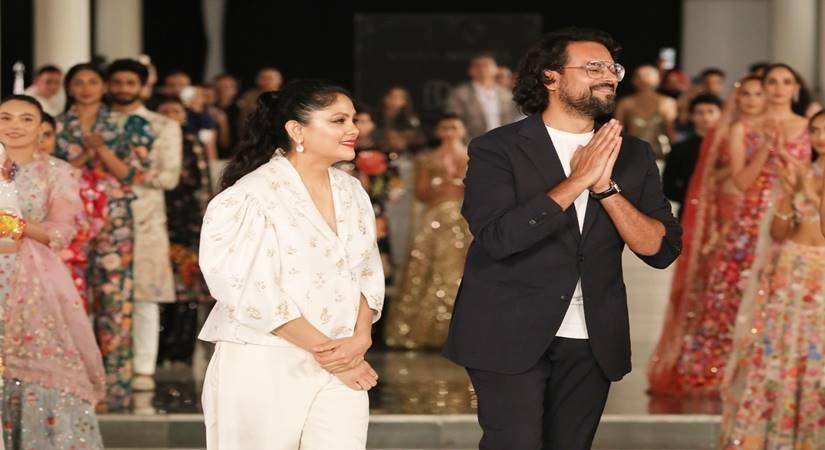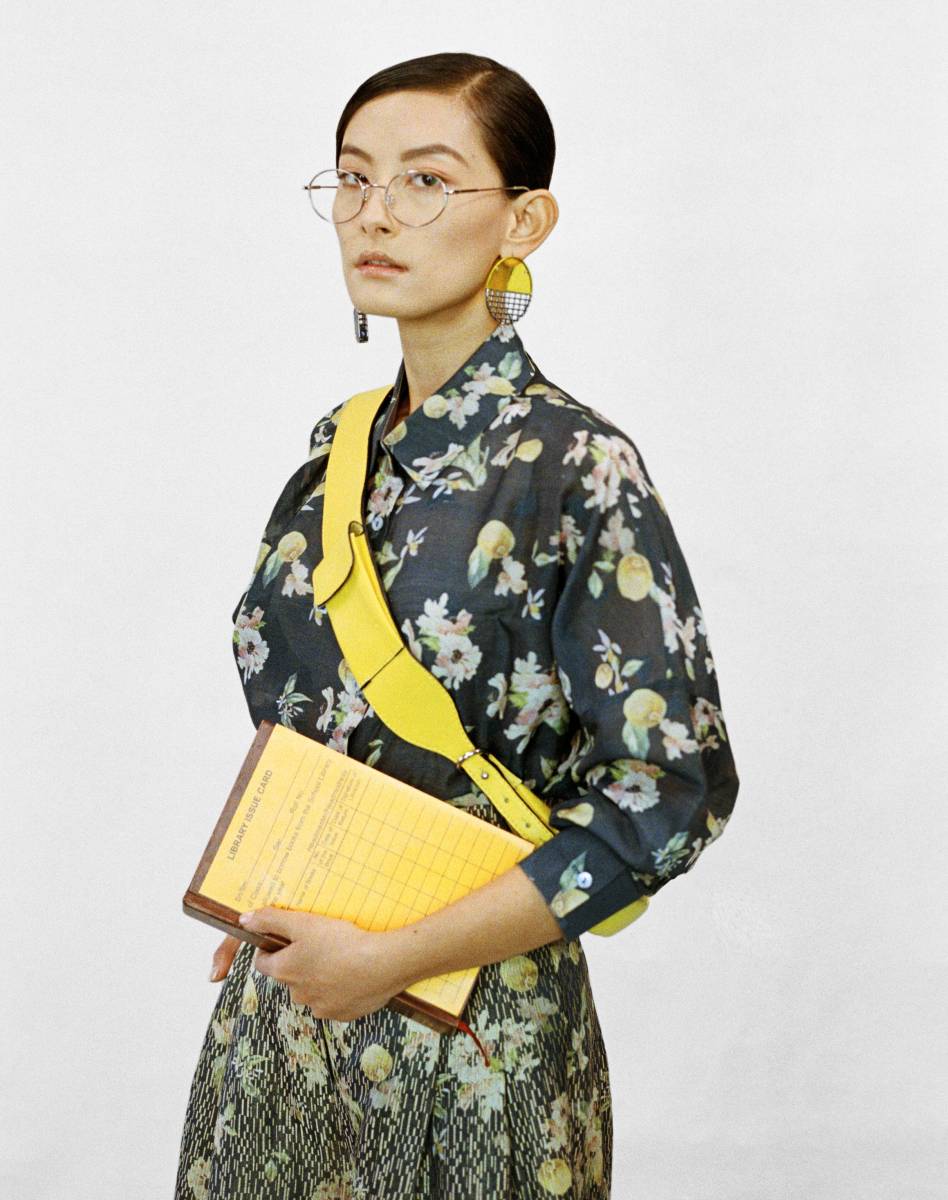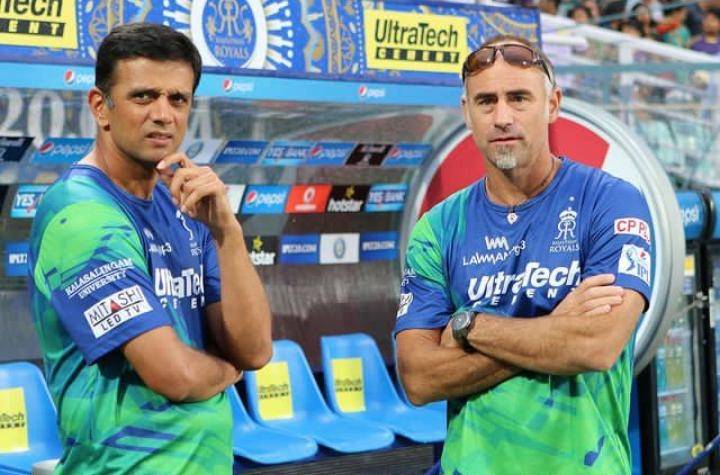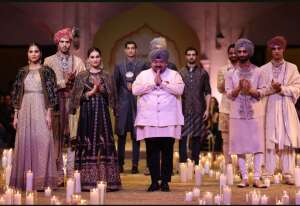They send us clothes to alter after 8-10 years of wearing, so that’s how we are creating slow fashion. It is ‘season-less’ and a timeless piece forever, passed down to the next generation perhaps…Rahul Mishra speaks with Tanya Banon
Rahul Mishra, is the only name in the Indian fashion industry who can truly be given the title of couturier, after all he is the only designer to be invited year-on-year to showcase at the Paris Haute Couture Fashion week.
On day two of the India Couture Week 2022, the designer presented a couture collection at an offsite show at the French Embassy in the Capital. ‘The Tree of Life’ is a manifestation of artistic memory, showcased in parts across Haute Couture Week in Paris and here, in New Delhi. It emerges from deep emotion and nostalgia. The core aim of the collection continues to focus on grass root empowerment and provide encouragement to the artisans that make the clothes. Mishra seeks to cater to a mindful customer.
While admiring his creations, We got a chance to catch up with the designer, who revealed all he could about his latest collection.

What is most important for you as a designer?
Rahul Mishra: I always ask myself, what is the purpose behind making the outfit? The purpose gives rise to the process, the process creates participation and that’s how the product is born. So inbuilt into the process, is the question does it take care of people, is it sustainable, in terms of brand sustainability, artisans sustainability, cultural sustainability, if it ticks all these boxes then I it makes sense.
When it comes flora and fauna, your use of surface embellishments and textures are as important as the motifs?
Rahul Mishra: When it comes to flora and fauna, it is India, be it the beautiful textiles and historical textiles at Banaras or weaving techniques like Chanderi or Kanjivaram, flora and fauna has been one of the hallmark of Indian motifs. When we talk about India, flowers are essential, and this is represented with two- and three-dimensional embroidery. Creating a dimension and creating life, how amazing and how limitless is Indian artistery!
To what do you credit the success of your brand?
Rahul Mishra: As a designer I like to push limits, how do we treat choices, how do we create a new version of poppy flowers, or creating a miniature ecosystem, the idea is to create newness and new techniques. Creating three-dimensional embroidery is equally exciting and challenging for the artisans. I think this entire excercise of challenging ideas, motifs, innovating techniques, and how we perceive surfaces, is very important for our brand. To keep pushing ourselves to create something new season after season, is the reason behind the growth of the brand internationally as well as within India.
Talking about slow fashion and making slow fashion are two entirely different things ?
Rahul Mishra: Talking slow fashion or making slow fashion are entirely different. In addition to speaking about slow fashion, it is my job as a designer to create a path to it and to walk the talk. To create things which are slower, this happens in two ways, how much time it takes to make something that’s one way of looking at it which is very important.
More than 90 per cent of the techniques used in house to create ensembles are slow, or all handmade. I call it as slow as possible, creating the idea of a simple flower into 3-D becomes even slower, because the artisery demands it. True to the values of ‘Couture’ and traditional Indian techniques, the pieces feature fabrics that are handwoven at villages in India, embroidered with hand for over 10,000 human hours and sewn to perfection for clothing that is featherweight despite the intricate surfaces. It then becomes an art piece.
The second is when this art piece is purchased because of the power and beauty of the garment, then the love for it doesn’t fade away easily. So, that’s where I really feel what we create fits in a beautiful perspective, where we create immensely slow and how people consume it in process where they cherish it forever. They send us clothes to alter after 8-10 years of wearing, so that’s how we are creating slow fashion. It is ‘season-less’ and a timeless piece forever, passed down to the next generation perhaps.

Sustainability isnt just for the environment its also for the trickle down affect to the smallest artisan part of the bigger picture, do you agree ?
Rahul Mishra: Sustainability is often defined in a very myopic way, people say only the material leads to sustainability. I really differ here sustainability is more of a process how you make things then just looking into the material, in terms of sustainability, I always say its all about the processes people implant. So today when we create an embroidery in a rhythmic way, any material we use is going to sustain because the process is so slow it allows nature to replenish the resource very well. It also has an immediate impact on the artisans work, it not only supports their livelihood, it supports their dreams, their aspirations, and their families.
Artisans create art, a beautiful piece blooming in front of them, it makes them bloom too, it makes them feel really happy about it and that divine satisfaction comes when you see a piece coming to life. So in that way, when we talk about environment we cannot take people out of environment, we need to look at everything in totality.
From the waterscapes of Santorini to the landscapes of Himalayas, your collections always have nature at their core, is this also the case with this collection as well?
Rahul Mishra: ‘The Tree of Life’ is a manifestation of artistic memory, showcased in parts across Haute Couture Week in Paris and at India Couture Week in New Delhi. It emerges from deep emotion and nostalgia. Growing up in India, we witness numerous instances of worshipping trees. This inherent part of our culture manifests itself in different ways during the harvest festivals, across our subcontinent.
My grandmother would tie a hand spun cotton thread around a banyan tree, not far from our house. The memory of this routine, of the ladies of the house worshipping the tree to bless their families, is a precious one. Basking in the golden sun, ‘The Tree of Life’ is a manifestation of nature’s abundance. At the break of the dawn, when sun shines from the horizon, how every leaf transmutes to gold for a moment. It is that moment and the more vivid ones after that, that we articulate in this collection. Fields of poppies, and a diverse wilderness taking over ancient architecture is rendered intricately in hand embroidered surfaces.

Two- and three-dimensional embroideries articulate the first flush of nature emerging on the surface of a body, and life that grows from it. Intricately embellished surfaces articulate scenes from dense forests with ancient architectural remains and vegetation in modern day silhouettes. A fresh application for the brand, metallics add another dimension to our brand’s signature hand craft.
ALSO READ-Recipes to fulfill your cravings












